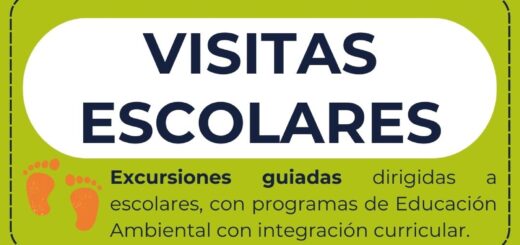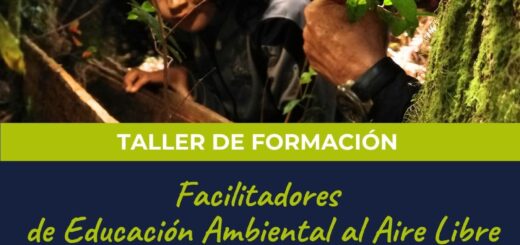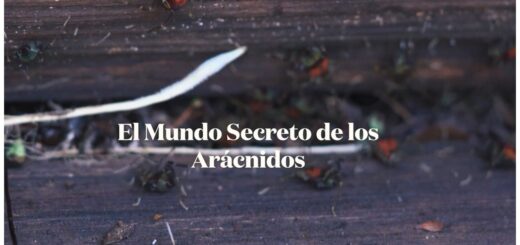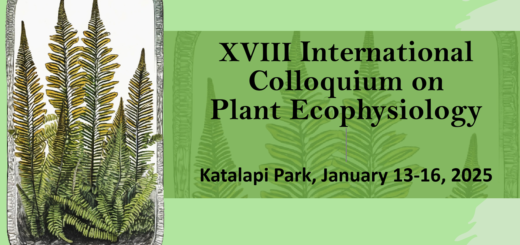PUBLICACIONES CIENTIFICAS SOBRE LA FLORA Y FAUNA DE KATALAPI

- Reyes-Díaz M, Alberdi, M, Piper F., Bravo LA, Corcuera LJ. (2005). Low temperature responses of Nothofagus dombeyi and Nothofagus nitida, two evergreen species from South Central Chile Tree Physiology 25:1389-1398
- Reyes-Díaz M, Ulloa N, Zúñiga-Feest A., Gutiérrez A, Gidekel M, Alberdi M, Corcuera LJ, Bravo LA (2006) Arabidopsis thaliana avoids freezing by supercooling. Journal of Experimental Botany 57:3687-3696) Doi: 10.1093/jxb/erl125.
- Zúñiga R., Alberdi M, Reyes-Díaz M, Olivares E, Hess S, Bravo LA, Corcuera LJ (2006) Seasonal changes in the photosynthetic performance of two evergreen Nothofagus species in south central Chile. Revista Chilena de Historia Natural 79:489-504.
- Piper FI, Corcuera LJ, Alberdi M, Lusk C. (2007). Differential photosynthetic and survival responses to soil drought in two evergreen Nothofagus species. Annals of Forest Science 64:447-452
- Pereira I. (2007) Micobiota liquenizada del Parque Katalapi, X Región Chile. Gayana Botanica 64:192-200
- Piper F, Zúñiga-Feest A, Rojas P, Alberdi M, Corcuera LJ, Lusk CH (2008) Responses of two températe evergreen Nothofagus species to sudden and gradual waterlogging: relationships with distribution patterns. Revista Chilena de Historia Natural 81: 257-266
- Castro-Arévalo M, Reyes-Díaz M, Alberdi M, Jara-Rodríguez V, Sanhueza C, Corcuera LJ, Bravo LA (2008) Effects of Low Temperature Acclimation on the Photosynthesis of three Chilean Proteaceae. Revista Chilena de Historia Natural 81:321-333
- Coopman R.E., Reyes-Díaz M., Briceño V.F., Corcuera L.J., Cabrera H.M., Bravo L.A. (2008) Changes in light acclimation capacity of photosynthesis in Nothofagus nitida during early development. Tree Physiology 8:1561-1571.
- Reyes-Díaz M, Ivanov AG, Huner NPA, Alberdi M, Corcuera LJ, Bravo LA (2009) Thermal energy dissipation and its components in two developmental stages explain its shade to sun transition of a shade-tolerant species, Nothofagus nitida, and a sun-tolerant species, Nothofagus dombeyi. Tree Physiology 20:651-662
- Parra MJ, Acuña K, Corcuera LJ, Saldaña A. (2009) Vertical distribution of Hymenophyllaceae species among host tree microhabitats in a temperate rain forest in Southern Chile. Journal of Vegetation Science 20:588-595.
- Piper F I, Reyes-Díaz M, *Corcuera LJ, Lusk CH (2009) Carbohydrate storage, survival, and growth of two evergreen Nothofagus species in two contrasting light environments. Ecological Research 24:1233-1241 DOI 10.1007/s11284-009-0606-5
- Alberdi M, Reyes-Díaz M, Zúñiga R, Hess S, Bravo LA, Corcuera LJ (2009) Photochemical efficiency of PSII and photoprotective pigments in seedlings and adults of two Proteaceae with different shade tolerance from the Chilean Temperate rain forest. Revista Chilena de Historia Natural 82:387-402
- Saldaña A, Hernández C; Coopman R; Bravo LA, Corcuera LJ (2010) Differences in light usage among three fern species of genus Blechnum of contrasting ecological breadth in a forest light gradient. Ecological Research 25:273-281
- Coopman RE, Fuentes-Neira FP, Briceño VF, Cabrera HM, Corcuera LJ, Bravo LA (2010). Light energy partitioning in PSII during development of Nothofagus nitida under different light environments in the Chilean temperate rain forest. Trees 24:247–259
- Coopman RE, Briceño VF, Corcuera LJ, Reyes-Díaz M, Alvarez D, Sáez K, García-Plazaola JI, Alberdi M, Bravo LA. (2011). Tree size and light availability increase photochemical instead of non-photochemical capacities of Nothofagus nitida trees growing in an evergreen temperate rain forest. Tree Physiology. 2011:1128-41.
- Lusk CH, Corcuera LJ (2011) Effects of light availability and growth rate on leaf lifespan of four temperate rainforest Proteaceae. Revista Chilena de Historia Natural 84: 269-277, 2011
- Gallardo J, Bravo LA, Corcuera LJ (2012). Leaf seasonal accumulation of a 47-kDa Dehydrin and changes in cryoprotective activity in Nothofagus dombeyi (Mirb) Blume. Gayana Botanica 69: 1-8.
- Parra MJ, Acuña K, Corcuera L, Rodríguez R.(2012). Presencia de la familia Hymenophyllaceae (Pteridophyta) en el Parque Katalapi, Cordillera de Quillaipe, Provincia de Llanquihue, Chile. Gayana Botanica 69: 384-387
- Lambers H, Finnegan PM, Laliberté E, Pearse SJ, Ryan MH, Shane MW, Veneklaas EJ (2012) Phosphorus Nutrition of Proteaceae in Severely Phosphorus-Impoverished Soils: Are There Lessons To Be Learned for Future Crops? Plant Physiology Jul 2011, 156 (3) 1058-1066; DOI: https://doi.org/10.1104/pp.111.174318
- Lambers H, Bishop JC, Hopper SD, Laliberté E, Zúñiga-Feest A (2012). Phosphorus-mobilization ecosystem engineering: the roles of cluster roots and carboxylate exudation in young P-limited ecosystems. Annals of Botany, Volume 110, Issue 2, 1 July 2012, Pages 329–348, https://doi.org/10.1093/aob/mcs130
- Atala C, Alfaro JF (2012) Vascular architecture of the dendroid antipodean moss Dendroligotrichum dendroides (Brid. ex Hedw.) Broth. (Polytrichaceae). Journal of Bryology 34, 277-280,https://doi.org/10.1179/1743282012Y.0000000032
- Sanhueza C, Bascuñan-Godoy L, Corcuera LJ, Turnbull MH (2013). The response of leaf respiration to water stress in Nothofagus species. New Zealand Journal of Botany 51:88-103; DOI:10.1080/0028825X.2012.75960051
- Donoso-Ñanculao G, Castro M, Navarrete D, Bravo LA, Corcuera LJ. (2013) Effect of auxin on cluster roots induction in Embothrium coccineumR. Forst. & G. Forst. in phosphorus deficiency condition. Chilean Journal of Agricultural Research 73: 220-224
- Escandon A.B., Paula S., Rojas R., Corcuera L.J., Coopman R.E. (2013). Sprouting extends the regeneration niche in temperate rain forests: The case of the long-lived tree Eucryphia cordifolia. Forest Ecology and Management 310: 321-326
- Delgado M, Suriyagoda L, Zuñiga-Feest A, Borie F, Lambers H (2014) Divergent functioning of Proteaceae species: the South American Embothrium coccineum displays a combination of adaptive traits to survive in high-phosphorus soils. Functional Ecology 2014 doi: 10.1111/1365-2435.1230
- Niinemets Ü (2014) Cohort-specific tuning of foliage physiology to interacting stresses in evergreens Tree Physiology, 34 (12), 1301–1304, https://doi.org/10.1093/treephys/tpu099
- Garces Cea MG, Claverol S, Alvear Castillo C, Rabert Pinilla C, , Bravo Ramírez LA (2014) Desiccation tolerance ofHymenophyllacea filmy ferns is mediated by constitutive and non-inducible cellular mechanisms, Rendus Biologies 337 (4), 235-243; http://dx.doi.org/10.1016/j.crvi.2014.02.002
- Saldaña A., Parra M.J., Flores-Bavestrello A., Corcuera L.J. & L.A. Bravo. (2014). “Effects of forest successional status on microenvironmental conditions, diversity and distribution of filmy fern species in a temperate rainforest” Plant Species Biology 29:253-262. doi: 10.1111/1442-1984.12020.
- Morales LV, Coopman RE, Rojas R, Escandón AB, Galmés J, García-Plazaola JI, Gago J, Cabrera HM, Flexas J, Corcuera LJ (2014). Acclimation of leaf cohorts expanded under light and water stresses: an adaptive mechanism of Eucryphia cordifolia to face changes in climatic conditions? Tree Physiology 00, 1–16; doi:10.1093/treephys/tpu085
- Atala C, Alfaro JF, Parra MJ, Saldaña A. (2014) Desiccation tolerance in Dendroligotrichum dendroides(Brid. ex Hedw.) from two Chilean populations with contrasting precipitation Tolerancia a la desecación en Dendroligotrichum dendroides (Brid. ex Hedw.) Broth. De dos poblaciones de Chile con precipitación contrastante. Gayana Botanica 71(1): 10-16, 2014 ISSN 0016-5301
- De los Ríos-Escalante P, Rueda T (2014) Crustaceans in freshwater bodiesin a coastal protected area (41 S, Katalapi Park, Chile) Crustaceana 87 (11-12) 1469-1472
- Ostria–Gallardo E, Paula S, Corcuera LJ, Coopman RE (2015). Light environment has little effect on heteroblastic development of the temperate rain forest tree Gevuina avellana (Proteaceae) . International Journal of Plant Science 176: 285-293. DOI: 10.1086/680230
- Sanhueza C, Bascuñan-Godoy L, Turnbull MH, Corcuera LJ (2015) Response of photosynthesis and respiration to temperature under water deficit in two evergreen Nothofagus Plant Species Biology 30:163:-165..
- Parra MJ, Acuña KI, Sierra-Almeida A, Sanfuentes C, Saldaña A, Corcuera, LJ, Bravo LA (2015). Photosynthetic Light Vertical Distribution Species in a Temperate Southern Chile. PLoS ONE 10(12): e0145475. doi:10.1371/journal.pone.0145475
- Rabert C, Hödar M , Bravo L, Quiroz A, Urzúa A. (2015). A rapid preparative-TLC/GC-MS methodology for discriminating between two filmy ferns (Hymenophyllaceae) native from the temperate rain forest of Southern Chile based on their soluble carbohydrates. Bol Latinoam Caribe Plant Med Aromat 14(5): 364 – 373.
- Gallardo-Cerda J, Bravo LA, Atala C, Vergara Quezada D, Corcuera LJ, Molina Montenegro MA (2016) Dehydrins presence in xylem parenchyma cells enhances hydraulic conductivity and physiological performance in Nothofagus dombeyi. South African Journal of Botany 102: 240-244; org/10.1016/j.sajb.2015.07.018
- Corcuera, Elisa (Ed.) 2016. Especies Exóticas Invasoras en Áreas Protegidas de Chile,
Memoria Primer Encuentro Reserva Biológica Huilo Huilo, 2014. Proyecto GEF/MMA/PNUD: Fortalecimiento de los Marcos Nacionales para la Gobernabilidad de las Especies Exóticas Invasoras (2013-2017). - Fajardo A, Siefert A (2016) Temperate rain forest species partition fine scale gradients in light availability based on their leaf mass per area (LMA). Annals of Botany 118: 307–1315, doi:10.1093/aob/mcw184
- Ostria-Gallardo E, Ranjan A, Zumstein K, Chitwood DH, Kumar R, Townsley BT, Ichihashi Y, Corcuera LJ, Sinha NR (2016), Transcriptomic analysis suggests a key role for SQUAMOSA PROMOTER BINDING PROTEIN LIKE, NAC and YUCCA genes in the heteroblastic development of the temperate rainforest tree Gevuina avellana (Proteaceae). New Phytologist 210:694-708; doi: 10.1111/nph.13776
- Flores-Bavestrello A, Król M, Ivanov AG, Hüner NPA, García-Plazaola JI, Corcuera LJ, Bravo LA (2016). Two Hymenophyllaceae species from contrasting natural environments exhibit a homoiochlorophyllous strategy in response to desiccation stress. Journal of Plant Physiology 191: 82–94
- Escandón, Antonio B.; Rojas, Roque; Morales, Loreto V.; Corcuera, Luis J.; Coopman, Rafael E.; Paula, Susana (2018) Physiological differences between root suckers and saplings enlarge the regeneration niche in Eucryphia cordifolia” Tree Physiology 38 (1), 129-138
- Fuentes-Olivares P, Muñoz-Ramirez CP (2018) On the seasonal abundance of two coexisting species of Ceroglossus ground beetle (Coleoptera: Carabidae) from the Katalapi park, south Chile. Sobre la abundancia estacional de dos especies coexistentes de Ceroglossus (Coleoptera: Carabidae) del parque Katalapi, sur de Chile
Revista Chilena de Entomología 44 (1): 15-21; Urn:lsid:zoobank.org:pub:F91F99BD-A489-4E39-AB12-3B8F0FEB0D30 - Fallard A, Rabert C, Reyes-Diaz M, Alberdi M, Bravo LA (2018), Compatible solutes and metabolites accumulation does not explain partial desiccation olerance in Hymenoglossum cruentum and Hymenophyllum dentatum (Hymenophyllaceae) two fimy ferns with contrasting vertical distribution. Environmental and Experimental Botany 150:272-279; ; doi.org/10.1016/j.envexpbot.2018.02.002
- Garces M, Ulloa M, Mirandan A, Bravo LA (2018) Physiological and ultrastructural characterization of a desiccation-tolerant filmy fern, Hymenophyllum caudiculatum: Influence of translational regulation and ABA on recovery. Plant Biology 20 (2018) 288–295; doi:10.1111/plb.12660
- Fajardo A, Siefert A (2018) Intraspecific trait variation and the leaf economics spectrum across resource gradients and levels of organization. Ecology, 0(0), 2018, pp. 1 –7
- Hayes PE, Clode PL, Oliveira RS, Lambers H (2018) Proteaceae from phosphorus‐impoverished habitats preferentially allocate phosphorus to photosynthetic cells: An adaptation improving phosphorus‐use efficiency. Plant Cell Environ. 2018;1–15, DOI: 10.1111/pce.13124
- Piper FI, Altmann SH, Lusk CL (2018) Global patterns of insect herbivory in gap and understorey environments, and their implications for woody plant carbon storage. Oikos 127: 483–496, doi: 10.1111/oik.04686
- Delgado M, Zúñiga-Feest A, Piper FI (2018) Does carbon storage confer water logging tolerance? Evidence from four evergreen species of a temperate rainforest. Australian Journal of Botany https://doi.org/10.1071/BT17104
- González MA, Ingrid de L. Inostroza, Visitación Conforti & Enrique Ascencio (2019) Microalgal taxonomic diversity from shallow acidophilus freshwater bodies from the south of Chile
Diversidad taxonómica de microalgas en cuerpos dulceacuícolas someros y acidófilos del Sur de Chile. Gayana Bot. 76, No. 2, 189-207. https://ojs.gayanabotanica.cl/index.php/gb/article/view/146/53 - Fajardo A, Siefert A. (2019). The interplay among intraspecific leaf trait variation, niche breadth and species abundance along light and soil nutrient
gradients. Oikos 128: 881–891. doi: 10.1111/oik.05849 - Ostria-Gallardo E, Larama G, Berríos G, Fallard A, Gutiérrez-Moraga A, Ensminger I, and Bravo LA (2020). A comparative gene co-expression analysis using self-organizing maps on two congener filmy ferns identifies specific desiccation tolerance mechanisms associated to their microhabitat preference. BMC Plant Biology (2020) 20:56. https://doi.org/10.1186/s12870-019-2182-3
- Ostria-Gallardo E, Larama G, Berríos G, Fallard A, Gutiérrez-Moraga A, Ensminger I, Manque P, Bascuñán-Godoy L, and Bravo LA (2020) Decoding gene networks modules that explain the recovery of Hymenoglossum cruentum Cav. after extreme desiccation. Frontiers in Plant Science doi: 10.3389/fpls.2020.00574
- Gloria B. Rodríguez-Gómez and Francisco E. Fontúrbel (2020) Regional-scale variation on Dromiciops gliroides occurrence, abundance, and activity patterns along a habitat disturbance gradient. Journal of Mammalogy, 101(3):733–741
GUIAS DE CAMPO PARA KATALAPI (Publicados en www.parque Katalapi.cl)
Briceño V, Fuentes F, Hernández C (2008) Flora de Pichiquillaipe
Galdames Placencia E, Vallejos Garrido Paulo (2012). Plantas epífitas y enredaderas del Parque Katalapi
Fuentes P. (2013) Coleópteros del Parque Katalapi
Díaz Páez H. (2010) Anfibios del Parque Katalapi
Mayorga M. (2013) Aves del Parque Katalapi




